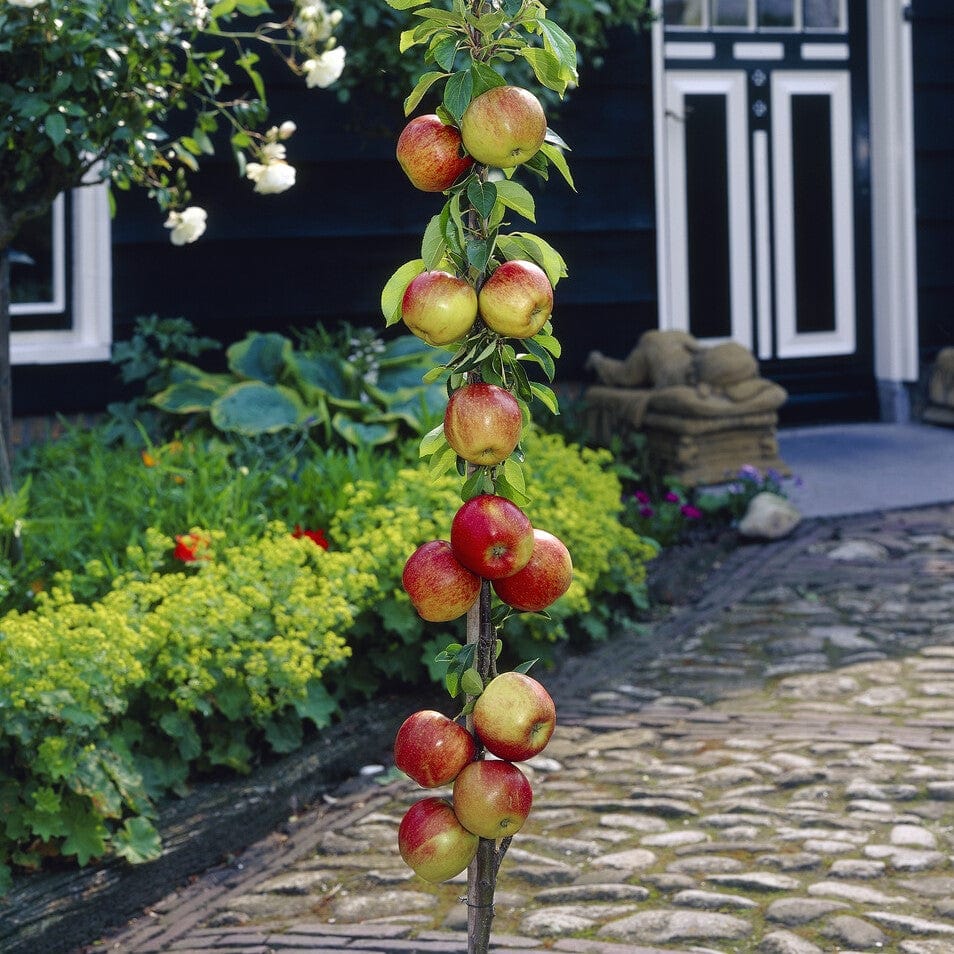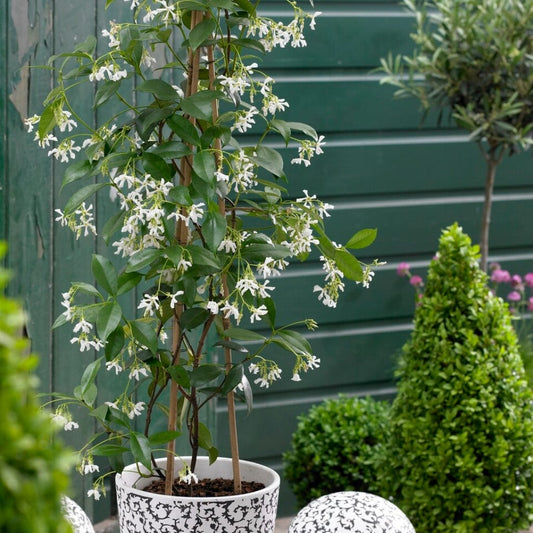Roots' Cotswolds Valley Nursery
Meet Mike
Tree-growing skills honed right across the globe
Having started out in Australia, studied in Northern Ireland and volunteered at an organic farm in Sweden, it’s fair to say Mike’s done his fair share of travel on his horticultural journey, so far! Having happily laid down roots here at Roots, Mike is the don behind our tree-growing operation, imparting each and every one of his globally-honed skills to benefit your garden. Grown in our purpose-built nursery, in the ideal climatic conditions of the fertile Vale of Evesham, we’re proud to supply only the happiest, healthiest and hardiest trees.
Need help picking?
Cordon Fruit Trees FAQs
What is a cordon fruit tree?
Cordon fruit trees comprise a single leader (either grown vertically as a freestanding tree or trained at an oblique angle against a wall) from which short, horizontal fruiting spurs branch outwards. Check out our guide on cordon apple trees for more information. What types of fruit trees can be trained as cordons? Pomes (apples, pears and quinces), drupes (cherries, plums, apricots, peaches and nectarines) and currants (redcurrants and whitecurrants) can all be trained as cordons. Even fig trees can be trained as a cordon, though this isn’t typically as common.
How do you plant a cordon fruit tree?
If possible, plant your cordon fruit tree in either spring or autumn, though any time of year is fine provided the ground isn’t frozen, sodden or too dry. For bare root cordons, soak the roots in water for an hour before planting. Dig a planting hole the size of your cordon tree’s root ball, sprinkle in some Rootgrow and work in some compost, then plant your tree, firming the soil down and giving it a good watering. It will also benefit from a layer of mulch being applied. Check out our video from grower John on planting a tree for more information.
How do you prune cordon fruit trees?
Cordons should be pruned at the end of summer, cutting back those newer shoots that are over 23cm long (roughly the length of a trowel) back to just a single leaf beyond the basal cluster. Occasional winter pruning may be needed if your cordon’s spurs are getting overly long. Here’s more pruning information.
What are the benefits of growing cordon fruit trees?
The main benefit of growing cordon fruit trees is that they take up far less room than a conventionally-grown fruit tree. Typically growing to just a couple of metres tall and a maximum width of between half a metre and a metre, these trees are ideal for gardeners who are limited on space.
How long does it take for a cordon fruit tree to bear fruit?
It typically takes a cordon fruit tree two or four years before it starts bearing fruit, depending on the rootstock. Cordons are usually grown using a dwarfing (or semi-dwarfing) rootstock (like M26, Quince C or Pixy) to keep them nice and compact, and these determine the time it takes for the tree to start bearing fruit.
Do cordon trees need special care?
To maintain their shape, cordons need to be properly pruned every year. Besides these pruning requirements, they can be treated in the same way you’d treat any other fruit tree – with a cordon apple tree, for instance, you’ll want to give it regular watering when establishing and a feed every spring, just as you would any other apple tree.
Can cordon fruit trees be grown in containers?
Yes, cordon fruit trees can be grown in containers. When grown as a narrow, freestanding tree, a cordon fruit tree can easily be grown in a container. Plant it in a loamy compost like John Innes No. 3, give it a vertical bamboo cane support, and make sure to water it regularly (trees grown in containers have a tendency to dry out more quickly). You can grow your cordon tree in a pot on a sunny patio or balcony with no issues, whatsoever!
What rootstock is best for cordon fruit trees?
Dwarfing or semi-dwarfing rootstocks are best for cordon fruit trees, as this helps keep the tree to a shorter ultimate height. Examples include M26 (apple), Quince C (pear) and Pixy (plums, gages and damsons).
What’s the difference between cordon and espalier training?
A cordon, whether grown as a vertical tree or trained at an angle against a wall/fence, comprises a single leader and only short fruiting spurs. An espalier fruit tree, by contrast, consists of a central leader from which long horizontal branches grow in tiers.
How tall do cordon fruit trees grow?
Mature cordons typically grow to a maximum height of just two metres, making them perfect for smaller gardens, patios and balconies. In terms of spread, they stay nice and narrow, usually growing between just half a metre and one metre wide.
Do cordon fruit trees need support?
Wall-trained, oblique cordons need a horizontal wire framework that it can be trained against, whilst freestanding, vertical cordons will also benefit from bamboo staking.
Fighting plastic waste
Delivering fresh from the nursery
Supporting UK growers
























